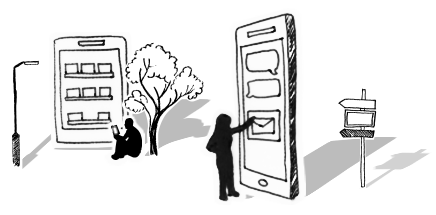




The Importance of Change Impact Assessments
Regardless of the type of change being deployed in an organisation, the change impact assessment (CIA) is a critical activity that will contribute towards making change stick.
Impacted stakeholders want to understand “What’s in it for me?”, and the change impact assessment uncovers this information and supports the planning of change interventions that will increase the probability of project success.
Read on to find out why change impact assessments are so important, how to conduct change impact analysis and go behind the scenes of a real-world application of this powerful tool.
What is a change impact assessment and what are the benefits?
Your change impact assessment will analyse the type and level of change expected to impact groups of employees. It is used to understand how people will be impacted and will therefore inform and shape your change strategy.
Carrying out a change impact assessment will enable you to spend time on the right activities for informing, engaging and equipping people to adapt when they need to.
Identifying and communicating what’s changing at the right time prepares people and allows them the opportunity to process what the change will look like for them. This can lead to:
- Increased speed of adoption, utilisation and proficiency with regard to the new ways of working
- Reduced hidden costs, such as the need to retrain people who haven’t bought into the change at an early stage
- Building internal change capability by coaching the client to start thinking through a change lens, enabling them to better manage future change initiatives on their own.
What are the different types, techniques or models of change impact assessment?
Your change impact analysis needs to measure potential change impact across a range of categories, including people, process, technology, culture and competency. Therefore, it should be quantifiable so it can be measured, compared and benchmarked. Use scales of 1-5, 6 or 10 to assess the level of change, with standard descriptions for each number so anyone participating or reading the results can understand the scores. As specialists in the people agenda of change, we use scales of 1-25 to enable us to get the granularity needed to truly focus on people, roles and functions.
What are best practices for carrying out a change impact assessment?
Firstly, always speak to the people who are going to be affected to get a true understanding of change impact; don’t just rely on project team members or sponsors for your data.
Though you should use numbers to standardise your scores, numbers alone generally aren’t enough; the detail behind your scoring is really essential, so get as much insight as you can.
The method you use to gather data will influence this. You can use a survey if necessary, but ideally you should have a detailed discussion with impacted colleagues. Or, even better, do it in a workshop with people moving around the room and contributing to various activities and questions at the same time.
Should I use a change impact assessment template?
Templates can be useful, but because every change is different, your approach to measuring change impact should be tailored to what you’re really trying to understand and measure.
For this reason, Afiniti doesn’t recommend or rely on a change impact assessment template. If you need any help designing an assessment that’s bespoke to your change, let us know.
How should I address the findings of my change impact analysis?
Once you’ve interpreted the data, you can bring it to life for your people with visual tables, graphs, etc.
Look for patterns in responses and see if you can tell an engaging story from these.
But also, crucially, pick out concerns or challenges identified and use your project team and subject matter experts to directly assess them and devise ways to address them as a team.
The change tactics you develop should be designed to help mitigate and manage the impact you’ve identified.
A Change Impact Assessment Case Study
Project Overview
A global energy company investing in a connected SAP ERP solution to harmonise their global ways of working engaged Afiniti as the business change partner to support the UK Business Unit.
Our Change Impact Assessment Solution
High-Level CIA
Initially we supported the client to identify and assess impacts across the dimensions of process, people, organisation, systems and data at a high-level.
The high-level change impact assessment represented the average magnitude of change across functional business areas. This was a great tool to support initial communication and engagement with impacted stakeholders and allowed for the change management team to be correctly resourced for the next stage of the project.
There was still much work to be done to uncover what change would look like for specific teams and roles, but the high-level change impact assessment provided the baseline to progress to more detailed change impact assessments.
Detailed CIA
Working in partnership with the client team to uncover the change impacts at the individual role level, we:
- Drew on the client’s technical and process knowledge and experience of their business areas
- Reviewed project artefacts, such as process design documents
- Conducted workshops to consider the technical input from a people perspective
The detailed change impact analysis was captured and baselined in a change workbook, which was the single source of truth for all change management related data and was regularly updated throughout the life of the project.
The value our change impact analysis added
1. The foundation of the change interventions
The change impact assessments formed the basis of what we needed to communicate, inform and educate people on to support the successful transition from the current to future ways of working. The change impact analysis supported the delivery of a number of interventions, including:
- Raising initial awareness about the project – highlighting the main changes across the organisation
- Building the learning curriculum and developing course materials.
- Establishing an adoption network, bringing together a community of change champions to support their business areas through the change.
The impact assessments determined the roles that were built into personas, providing input to change impact workshops to bring the changes to life for highly impacted roles before attending training. The data captured in the assessments also provided important input into future targeted messages.
By understanding the change impacts, we were able to identify and reach out to teams and roles facing radical and major change to see how they currently felt about the transition.
We ensured these managers and teams were added to the stakeholder engagement plan so that we could continue to support these individuals in their change journey. We continued to monitor highly impacted teams to identify change resistance and change fatigue.
3. Identifying gaps in the current project deliverables
An inadvertent benefit of the impact assessments for this client was identifying gaps in solution and process design; we uncovered over twenty changes that could not yet be assessed due to:
- Unfinished design and build across SAP S4/HANA and integrated systems
- Lack of direction/ agreement regarding the organisation’s future processes and ways of working.
The project team subsequently progressed these to completion in readiness for finalising the baselined impacts.
4. Focusing the client on thinking about change from the individual perspective
Ultimately, the impact assessments enabled the client team to begin to really think about benefits and challenges at both the functional and the individual level.
The focus moved from emphasising the benefits the project would bring for the organisation to looking at it from a people perspective.
As a result, we had an engaged client team who understood the importance of putting people at the front of centre of everything they do.
Learn more about how we can help your organisation with its SAP S/4HANA business change challenges and opportunities, or alternatively get in touch for support with the change impact assessment for your next project.
To get the latest change tips, advice and guidance directly to your inbox, sign up to our monthly Business Change Digest.

